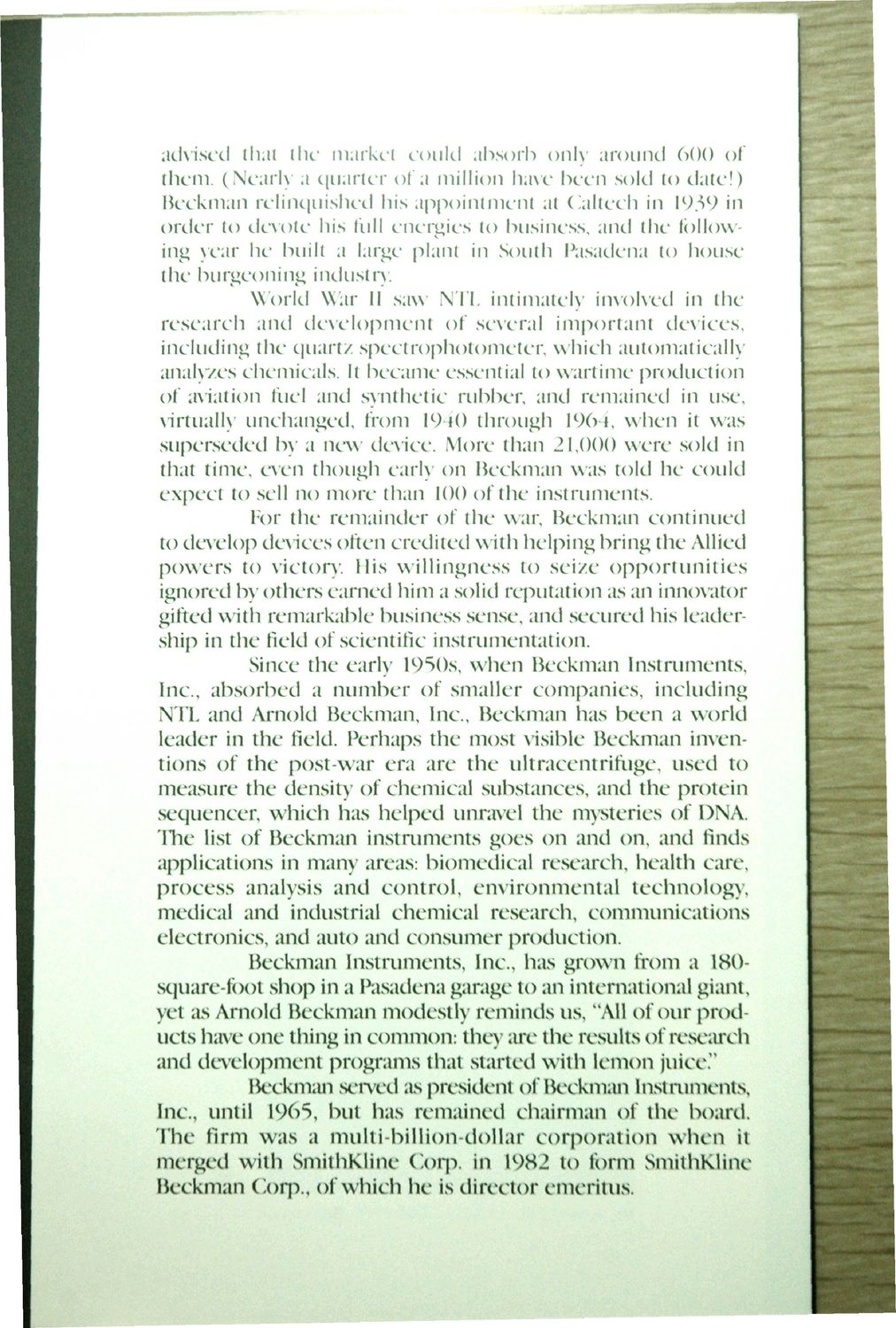| |
| |
Caption: Dedication - Beckman Institute
This is a reduced-resolution page image for fast online browsing.

EXTRACTED TEXT FROM PAGE:
advised that the market could absorb only around 600 of them. (Nearly a quarter of a million have been sold to date!) Beckman relinquished his appointment at Caltech in 1939 in order to devote his full energies to business, and the following year he built a large plant in South Pasadena to house the burgeoning industry. World War II saw NTL intimately involved in the research and development of several important devices, including the quartz spectrophotometer, which automatically analyzes chemicals. It became essential to wartime production of aviation fuel and synthetic rubber, and remained in use, virtually unchanged, from 1940 through 1964, when it was superseded by a new device. More than 21,000 were sold in that time, even though early on Beckman was told he could expect to sell no more than 100 of the instruments. For the remainder of the war, Beckman continued to develop devices often credited with helping bring the Allied powers to victory. His willingness to seize opportunities ignored by others earned him a solid reputation as an innovator gifted with remarkable business sense, and secured his leadership in the field of scientific instrumentation. Since the early 1950s, when Beckman Instruments, Inc., absorbed a number of smaller companies, including NTL and Arnold Beckman, Inc., Beckman has been a world leader in the field. Perhaps the most visible Beckman inventions of the post-war era are the ultracentrifijge, used to measure the density of chemical substances, and the protein sequencer, which has helped unravel the mysteries of DNA The list of Beckman instruments goes on and on, and finds applications in many areas: biomedical research, health care, process analysis and control, environmental technology, medical and industrial chemical research, communications electronics, and auto and consumer production. Beckman Instruments, Inc., has grown from a 180square-foot shop in a Pasadena garage to an international giant, yet as Arnold Beckman modestly reminds us, "All of our products have one thing in common: they are the results of research and development programs that started with lemon juice" Beckman served as president of Beckman Instruments, Inc., until 1965, but has remained chairman of the board. The firm was a multi-billion-dollar corporation when it merged with SmithKlinc Corp. in 1982 to form SmithKlinc Beckman Corp., of which he is director emeritus.
| |